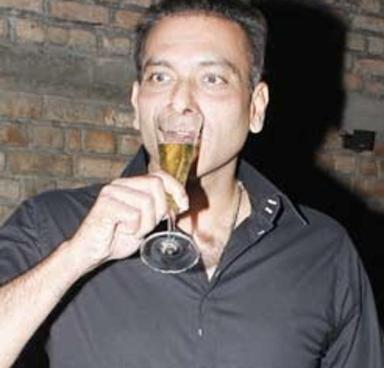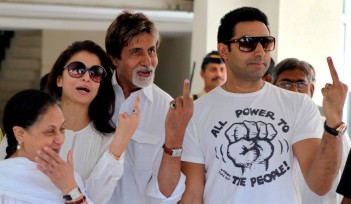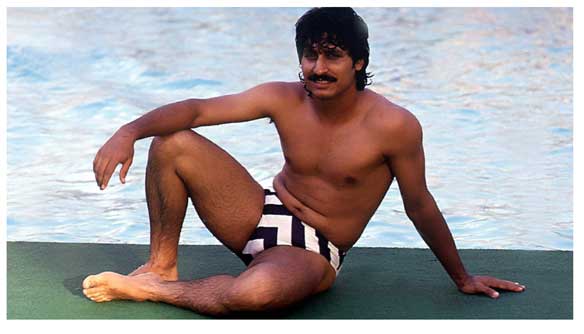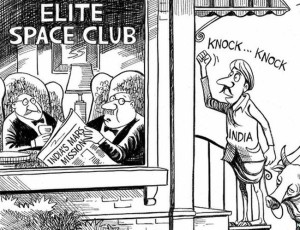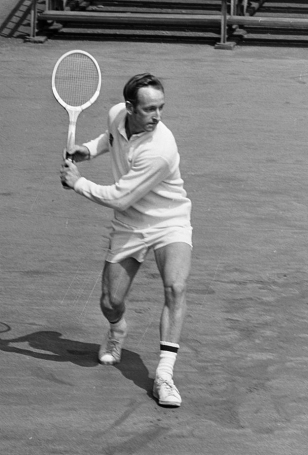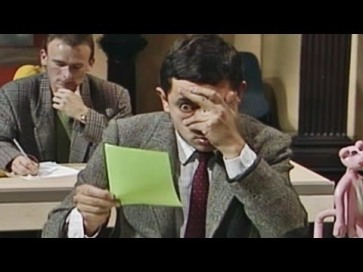First up, I have a confession to make. I was never the serious cricket playing kind. I never quite understood the dynamics of the fast appeal and six plus out of gully cricket[1] with a tennis ball. Do I bat with my wrong hand to make use of favourable field restrictions as only one side is available for run scoring? Do I run the small kid out by calling him for a non- existent single since he’s making a mess of the target? These subtleties were lost on me. I have played two games of leather ball cricket. Two. That too without protection. Most of my cricket playing knowledge is limited to a highly recreational level, that too bound within the small confines of empty sites around Bangalore and later, to a larger area, at the playgrounds of KREC Suratkal where I played some atrocious cricket, much to my teammates’ chagrin. If at all there was an award for maximum effort and minimal end result, I would have been the preeminent winner of them all. On the best of days, I was a useful lower order bat, a guy who could land 6 balls and not give too many runs, with the return of an odd wicket (that too caught at deep midwicket, mind you). On the bad days, the cries of exasperation from my teammates would be louder than my own actions on the field. This probably explains why my sobriquet slipped from the local Wasim Akram to Irfan Pathan as days passed by (my friends were nice to me at the start), hinting at early course correction. It would have changed to Heath Davis (no left handed version came to mind, thank God) and Chris Martin (like all great artists, I was ahead of time for this one) but for the trivial reasons stated. I was the rabbit out of the hat. If you thought I couldn’t sink lower, I managed to find oil. Once, I managed to finish a 28 runs to get in 2 overs target in an unfinished penultimate over which yielded 29 runs to the opposition with two balls to spare. Enough said about my pedigree.

Chris Martin: My batting talent counterpart, scaled to the international cricket arena. Image source-1
What I lack on the field, I make up for it by my insane love for watching Indian cricket. Hrishikesh Kanitkar’s wild swipe off Saqlain in Dhaka? I was relaying the scores to my relatives who were victims of a power cut. When Sachin rattled McGrath in Nairobi with his sledging? I could scarcely believe my eyes. When Venkatesh “shudder” Prasad was sent as a nightwatchman only to be bowled shouldering arms to a Paul Adams delivery on middle stump? Yup. I knew his capabilities. In his (non- existent) defence, he watched the ball all the way through, as Gavaskar always suggested. I knew most of Ravi Shastri’s clichés and his chapathi shot prowess much before it was cool to make fun of over social media. Since supporting India in the 90s was mostly heart wrenching, over time, I learnt to hedge my morale by supporting many other teams from different sports. I would be happy at the end of the year, no matter what. In spite of proliferation of other sport into my schedule, televised Indian cricket since the 1992 World cup has always been my first love and favourite leisurely pastime. This blog, with a lot of help from my friends (who are my friends in spite of my cricketing prowess), is our contribution to how the sport can be made better for all of us fans.
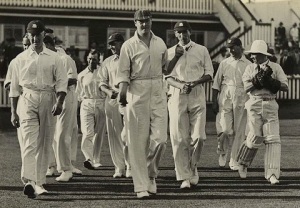
The 1928 Brisbane Timeless Test: A no time limit format was toyed around with for a while until the commercial aspects of the game proved to be untenable. Image source- 2
Cricket always appeared to me as an anachronism. It is probably the only team sport where the most popular form has changed with time. If we compare it to the more widely played football (the second most popular sport in the world, if contemporary advertisement campaigns are to be believed) – which I believe cricket should look to emulate- the 90 minutes are sacrosanct. The gameplay of the classical form of the game of cricket looks like as if is from one of the Robert Zemeckis’ scripts paying homage to a bygone era. A game that lasts 5 inordinate days with few highlights and the real possibility of no winner sounds right out of a celebrated outcome of a successful diplomatic mission. If one were to stretch the comparision further, the game’s pace could be compared to many a lachrymose soap opera which depend on the plot devices such as an extra marital affair, amnesia and a lobotomy (both by the cast and the audience, not necessarily in the same order) for furthering the status quo. Heck, even chess games have smaller timeframes nowadays! It leaves me with no doubt that this game found its early patronage on the countryside, during long summer days, with accompanying breaks for refreshments. The early development of the game must have surely correlated with the time of newly found wealth for its home country, with leisurely time to boot as an aftermath of the first industrial revolution.
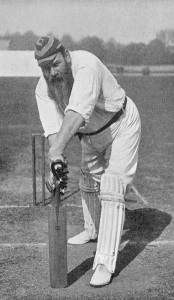
W. G. Grace: The poster boy of the Amateur cricketing times in the Victorian era. Image source- 3
Compared to football, cricket seems much less proletarian/ egalitarian. Peel off each accompanying layer of cricket gameplay, the subtext could not be more evident. It embodies the class structure and imperial notions of Britain during the days of the Raj. The captain of the game is usually a batsman, who issues his orders to the entire team. At each delivery, the bowler usually looks to have more physical exercise as compared to the batsman who is usually sitting pretty – even the slightest perturbation in the path of the ball will have people from the opposition team converging towards the ball. It is no surprise that fast bowling in England was seen as a working class profession and this manifested in the adage of looking down into a coal mine. Whereas, most of the royals and the gentry usually were batsmen. During the heyday of Grace et. al (old habits die hard!), the fielding standards were quite lax- a gentle trot to chase the ball, no sliding and bending over and a small throw, presumably not to tax the gentleman into making a harried run. Only batsmen are afforded runners – who can proceed to become even more immobile and yet contribute to the game- adding further insult to injury. Clearly, bowlers and fielders are viewed as expendable.

The first Duke of Wellington: One of the celebrated war heroes of the English empire to whom the quote of playing fields of Eton was misattributed to. Image source- 4
Is it any surprise that the Anglocentric and glory days of the British Empire lent to cricket being the de facto national sport of England? Class structure, the civil service, the bravado of the public school system all have deep rooted influences in the way cricket is conducted in the world today. Looking at the resplendent literature which celebrates cricket from the days of yore, the much cherished pieces point to an evocative style, associated with the ways of a gentleman. Phrases like sinewy wrists, languid drives, haring down the wicket are commonplace and most of today’s descriptive writing draws on these aristocratic vocabulary and influences. In short, cricket was seen as a metaphor for life itself. A look at the metaphors of cricket will showcase the full spectrum of situations that a gentleman could face in his life. Playing fair, like a gentleman while invoking a nebulous “spirit of cricket” was the only way of playing the game. It isn’t cricket, they said for Mankading, while looking the other way during Bodyline. It is not whether you win or lose, it is how you play the game was an oft repeated quote. The battle of Waterloo was won on the playing fields of Eton (where games like cricket instilled the necessary values to the officers in the British army) was a prevailing sentiment in the 19th century. Eton vs Harrow was a prestige fixture at school level (the fixture is still played annually at Lord’s). Gentlemen vs players was the marquee fixture at the time with WG Grace turning the result in the former’s favour which used to be a facile win for the players until then. Wikipedia notes that the influence of the match waned after the professionalism of the game took over. Until the sixties, Gentlemen had the exclusive privilege of captaining England. This was the delicious irony of being part of the bourgeois, being able to captain the team while not necessarily being one of the better players. An illustration of the degree of entitlement was that one could claim dubious expenditure, have the odds in your favour and still end up looking down upon the professionals while claiming to play the game in a fair manner. These are obviously romantic notions of constitutional monarchy and imperialism. When was the last time we ever heard the word classy attributed to the pull, cut or a hook (the last one could have been a part of a Victorian secret) shot consummate with timing? It most certainly is used in conjunction with a well-timed drive which earns the oohs and aahs from the crowd. Some commentary on cricket and other sports can be found here.
The inward- looking, holier-than- thou, sanctimonious nature is quite prevalent in the major powers of the world today with a world view limited to their comfortable environs. The British used the term splendid isolation to maintain their hegemony, no doubt practiced on the cricket field while the natives were excluded from participation. The spread of cricket is in no uncertain terms due to the love of the game by the Englishmen who took it to lands they colonized and played the game. At the zenith of the British Empire, it was said that the sun never set on it. I have no doubt that the Englishman enjoyed his day in the sun with a game of cricket. Perhaps England pursued colonization since cricket could be played all round the year as opposed to the time of the sun in the Northern hemisphere!
On the other hand, the assimilation of the game in India followed a different script. Cricket primarily travelled as the game that the colonial masters played across the British Empire and was largely aspirational in nature in its infancy in the Indian subcontinent. The sport still represents a colonial hangover. For a country that wears black robes in harsh summer to the courts, and presented the budget to suit the GMT until recently, following untimely breaks for lunch at 1100 and tea at 1340 during the winter time (In England, the start time is usually 1100 local time as opposed to 0900 in India and hence the session times are apt) became the norm. It is another matter that the above meal times are still (religiously) followed in Tamilian weddings, hinting at influence of cricket in erstwhile Madras. I digress. The Empire, built on the foundation of trade, first attracted the attention of the locals in cities as opposed to mofussil regions. Indian cities, Bombay in particular, were the places where the locals wanted to emulate their imperial masters and play their game. Given the proximity of Gujarat with Bombay, it is the other state (along with Maharashtra) which got 3 spots in the Ranji trophy. Many of the earlier teams (look at the number of princely states in the current and defunct teams) were patronized by Indian royalty (not surprisingly) and some of the royals indeed played the game with certain distinction (Ranji, Duleep, Pataudi) and some, not so much (Maharaja of Vizianagram). Why, even today, the long shadow of monarchy is still present in the names of several IPL franchises! India too has a batsman bias for captaincy. Indian batting, from the days of Ranji, has been well served (with at least one high calibre batsman per era) which explains why batting is aspirational in the country. Absence of role models, bad pitches are usually reasons attributed to lack of quality bowlers in India. One glance across the border would lead to the inference that it is nothing endemic. It is more to do with the culture of bowling and fielding being viewed as a menial task. If I could go back to the allusion to street cricket dynamics at the start of the article, one always batted first in a gully cricket match and would do anything to hang on to it. I’ve known people who have conceded follow-on for the sake of batting. Kapil Dev puts a better spin on this culture, calling it the officer- worker divide, no doubt winking & nudging in the direction of the civil services and class structure.

That evening at Lord’s: The fanatical following for cricket in India can be traced to this very moment. Image source- 6
Cricket, in spite of it being seen as a rich sport (need for extensive & expensive equipment and a larger playing area) enjoyed a following as opposed to football and field hockey. It was indeed tainted as a remnant of the colonial empire (more to do with the Bombay pentangular being conducted on religious lines which reeked of the divide and rule). However, this did not stop Indians in cities from playing the game. From an anglo-centric prism, just like the way we Indians modified English and adopted it, the street level of cricket would employ the tennis ball with boundaries only straight down the wicket (thus arming an inward looking Mumbaikar with his own explanations of why the straight drive is Indian fast food & attributing it to Bombay’s lack of space). Especially after the 1983 world cup victory, cricket has been the sport of first choice across the social strata. This, combined with Tendulkar’s uniting, self-esteem inducing batsmanship, led to the game in India became the giant oak which would not allow other sports to grow in its shadow (few games like Kabaddi, Badminton, Hockey, Badminton have emerged from the shadows recently) .

The conception of the IPL: The big bang moment when an alternate cricketing universe was created out of thin air. Sreesanth had a hand in both its birth and one of its biggest controversies. Image source- 7
India’s first brush with power was as the first world cup host outside England in 1987. For a nation whose administrators were denied complimentary passes for the previous edition’s final, it was quite a coup. The 1987 cup was patronized by several local sponsors (most notably by Reliance) and the fulcrum of the cricketing world had shifted to the east forever. This wasn’t much of a surprise given that the subcontinent was the world’s greatest market. With the benefit of hindsight, we can now say that we needed a few icons and some symbolic victories to embrace the game which had been weighed down with the imperial yoke for the previous generations. In fact, in 1982 itself, Scyld Berry had (later to be editor of Wisden) prophesized that the epicenter of the game was destined to shift to the east. Over the years, India has only grown and behaved in a way any power with ambitions of global domination has; a show of strength in the Mike Denness incident, flexing its muscle in the ambush marketing issue in the ICC tournaments of the noughties, holding moral high ground through various methods in the Monkeygate episode and most recently tweaking the revenue distribution model at the ICC to its advantage. Threats of forming a new league, playing around with the cricket world cup format, being the game’s arbiter for issues such as tour pullout and the DRS are merely privileges of newly acquired power. The second shot to the self- esteem and confidence to the nation happened in 2007 when India won the World T20, rather unexpectedly. The overwhelming sentiment then was the wanting to be Australia. What seemed as a casual Sunday outing in the park till then was dealt with all seriousness in a turnaround of 6 months thanks to Lalit Modi harnessing the catharsis from the Indian victory. The theatre for sport and administration which was once Anglo- Australian has shifted for good. The IPL has become the biggest gig in town that everyone wants to be a part of, symbolically taking over from the status of county cricket of yore and Kerry Packer’s World Series Cricket. Eoin Morgan would certainly attest to that sentiment. The sheer audacity of the IPL was such that the tournament was shifted overseas in 2009 to cement its place in the cricketing calendar. Never since Kerry Packer’s moment was something like this witnessed which led to a seismic shift in the way cricket is played today.

N Srinivasan: The personification of the power of the BCCI and the big, bad wolf of the game. Image source- 8
India is destined to hold on to this since it is a growing power with financial muscle and with a greater catchment area compared to US and Europe put together. Given the recent history of how India has behaved in the last decade, the rest of the cricketing world are right to feel aggrieved and threatened. India has been advised well to wear its power lightly. Due to the aforementioned reasons, India is best placed to set the agenda for world cricket which is likely to be not sustainable in its international avatar. India would do well to play the role of elder statesman (rather than big brother), putting a hand over the shoulder (metaphorically) of the rest of the world. India should not wait for the farcical Nobel peace prize nudge given to Obama as a cue to swing into action. A large number of innovations such as drop in pitches, hawk eye, hot spot, snickometer, speed guns, biomechanics, indoor stadium, day-night matches, super sopper, flashing bails have come from the Anglo-Australian bastion. Why, even a backwater like the Dubai has a high performance cricket academy. Funding for an innovation is definitely a necessary but not sufficient condition. What is more essential is to have a will and to develop an ecosystem for exploring ways to change the game for the better. Though India is well placed in the finance department, it is yet to be established that India/ BCCI is working for a betterment of the game on and off the field. It is rumoured that when the BCCI was asked for to come up with an innovation in Indian cricket, they responded with the strategic timeout.

The geographical extent of the British Empire: Cricket should look to emulate the reach of football in its quest for being labelled as a global game. Image source- 9
A challenge for India would be to take the world along as it hunts for newer fanbase, conjuring a playing structure which ensures parity between playing nations/clubs – one which would promote newer people/ associations to embrace the game and take it beyond the traditional two hand count, on a trajectory to a self- sustaining professional level. For a day where a kid playing the game in a far-away continent is spotted by talent scouts and his/ her potential is realized at the highest level in front of a global audience, much needs to change in the game of cricket. It still has a long way to go looking at the melting pot that is European football. However, before considerable resources are to be utilized by the powers that be, a certain amount of ideas need to fall in place on an informal platform. Forming a critical mass by means of discussion, debate and thereafter creating awareness is only the first step. A range of articles can be expected on this platform- analysis, narrative, short quips and satire. The blog hopes to garner popular opinion on where the game could and should go in the future in realizing these objectives. For, the sun should never set on the cricket empire.
[1] Since gully cricket was played on the roads, throw (below a certain appealable speed) was the choice on smaller pitch length playing arenas. In order to discourage six hitting (and it landing on a window pane), a deterrent where one had to lose his wicket for his/her misadventure was built into the gully game.
Disclaimer: The images used are not property of this blog. The copyright, if any, rests with the respective owners.
